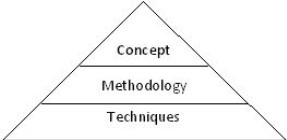LUPMIS
Main menu:
- Home Page
- 1. Background and time frame
- 2. Community Orientation and GIS
- 3. Expected IS activities and output
- 4. Sites of installation and communications
- 5. Data sharing with other LSAs
- 6. Network
- 7. Software
- 8. Human resources and training
- 9. Work activities
- 10. Conclusions and future IS developments
- Annexes
- Annex 1: Projection and datum
- Annex 2: Procurement plan
- Annex 3: Justification of procurement items
- Annex 4: Standards
- Annex 5: Possible scenarios of GIS analyses for land use planning
- Annex 6: DBMS for permits
- Annex 7: GPS mapping
- Annex 8: Data request for GIS
- Annex 9: Financial considerations
- Annex 10: Land use planning activities with IS
- Annex 11: Planning chart: Tasks
- Annex 12: Work programme: Tasks
- Annex 13: Pilot communities
- Annex 14: Coverage of orthophotos for LAP
- Annex 15: Training content
- Annex 16: Glossary
1. Background and time frame
1) Background and Time Frame
1.1) This paper addresses the setup and management of the Land Information System (LIS) for the Land Use Planning and Management Project (LUPM) at TCPD, with the proposed name LUPMIS. It raises technical implementation issues, but can – at this stage - not provide full answers. It should be seen as a concept (or ‘system design’), not describing the entire methodology. It also provide an idea of what kind of output can be expected, how the output of IS can be used; what it can do, and what it can not do.
Some more specific notes in the fields of GIS, ICT, DBMS, network administration can be found in the Annexes.

Figure 1.1: Components of an IS setup
The term ‘concept’ corresponds to ‘system design’, ‘methodology’ includes software design, techniques incorporate coding, wherever necessary.
An ‘Information System’ consists primarily of trained staff (‘brainware’), data (‘dataware’), hardware and software (either off-the-shelf or customized). They are all described in individual chapters in this report. But an Information System also includes management, user orientation and feedback, aspects of technology transfer and application, economic settings and marketing, and sustainability considerations.
1.2) To set up the most appropriate GIS at TCPD to execute the given task, the IT environment had to be assessed, in particular with its potentials and constraints on hardware and human resources. The points of consideration and some possible scenarios with their pros and cons of the Information System (IS) are discussed.
The system has to be:
- Efficient: It has to carry out the task required;
- Sustainable: It has to continue after projection termination;
- Appropriate: It has to work within the administrative, financial and technological environment (constraints that exist or are foreseen will exist);
- Simple and easy to use: It has to operate without high tech requirements, and according to the skill level of the staff, with relatively little specific training;
- Compatible: It has to operate in line with other LSAs.
1.3) An information system to support land use planning is primarily a decision-support information system, which has to provide unprocessed and partly processed information to land use planners, who then formulate land use plans based on their experiences and criteria.
This is in strong contrast to other information systems, where standardized retrieval of information to a wide audience of users is the main goal, e.g. in the field of land administration. These are process-oriented information systems with models which define the interaction of all data sources (and agencies), e.g. data retrieval models.
(This differentiation of prime functionality might have an impact on the choice of software).
1.4) The time frame considered in this design ranges from the Project life span (end by March 2010) through medium term to long term.
For the consideration of the time frame of the IS two aspects are considered:
1.5) The Project has defined activities and general outputs, which have to be achieved and which are illustrated below. But the Project will have implication to future land use planning activities and technology applications far beyond the life of this Project.
Structural setup of an IS is expensive, time and resources intensive, and complex. Advantages can be expected in the long term. It is therefore to be seen as a long term investment and therefore requires, from the conceptual point of view, a long term strategy in the fields of:
- Data acquisition;
- Standards;
- Human resources;
- Sustainability;
- Quality control;
- Orientation to possible applications and users.
A‘long term’ time frame refers to some 10 years or more and is shown with this marker:
![]()
1.6) On the other hand, technology is changing very fast. It is not possible to foresee the technology advances in software, communication and IT potentials even a few years ahead. Break-through technologies in hardware, software and communication can be expected any time. To be rigid and insist on one defined software and platform is not adequate.
Also, in a project where appropriate technology is to be applied, the following constraints need to be considered:
- Hardware: Harsh and difficult environment, question of available maintenance,
- Software: Costs, availability, need to upgrade routinely,
- Communication (bandwidth, cabling, provider reliability) and
- Human resources (staff availability, brain drain, training needs and achievements of trained staff)
All will strongly influence the level of applied technology.
Due to these two reasons (technology changes, constraints of appropriateness of technology), but also to have a practicable approach, this design will define applicable, implementable IS solutions till midterm of the Project (1-2 years). At that stage critical technological aspects will have to be reassessed (internet dissemination, staff training, financial sustainability).
These ‘flexible’ aspects are marked as such:
![]()
Copyright @ TCPD / LUPMP - version 2.0